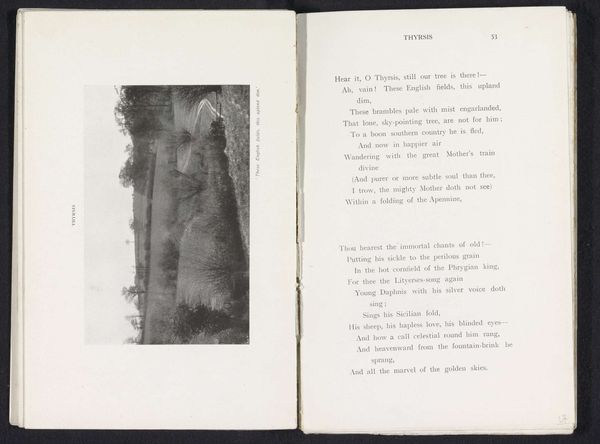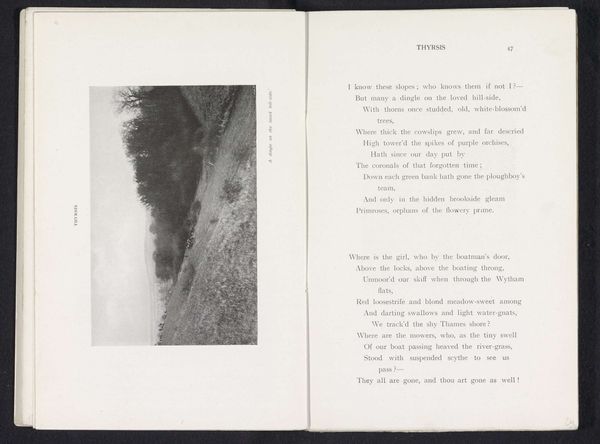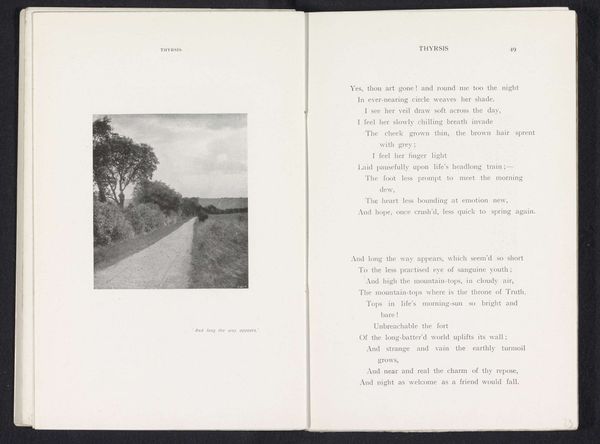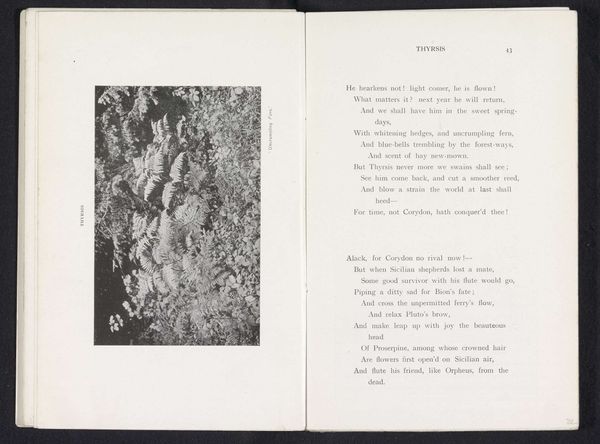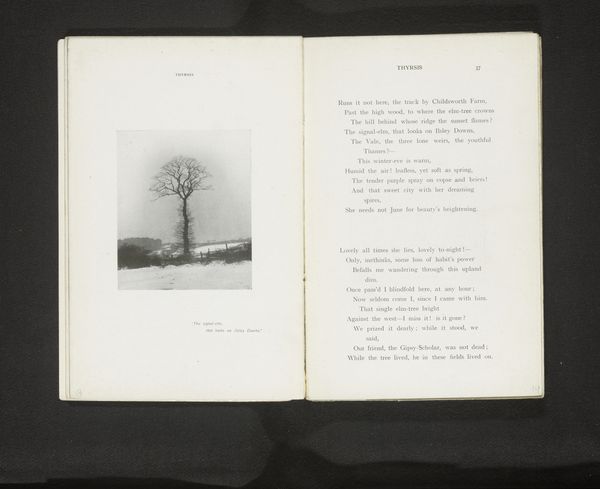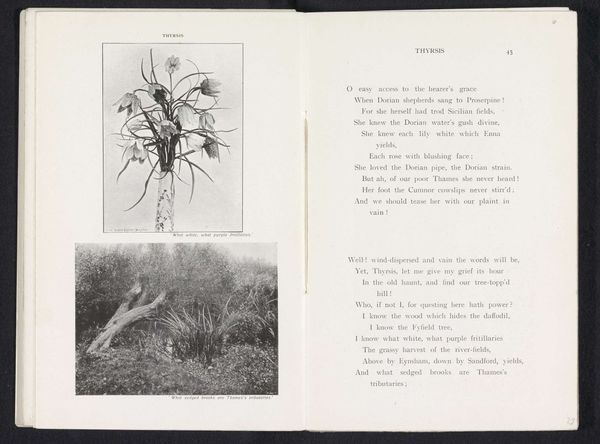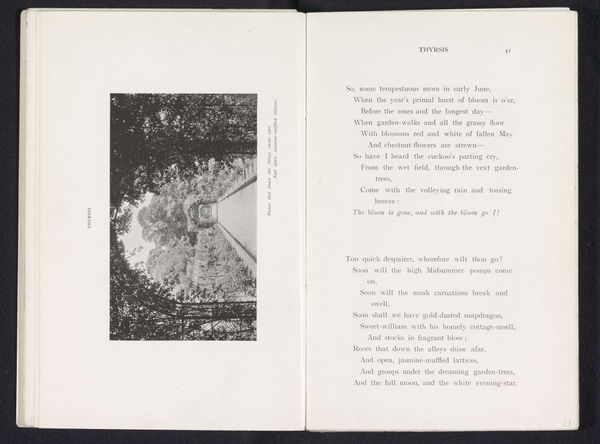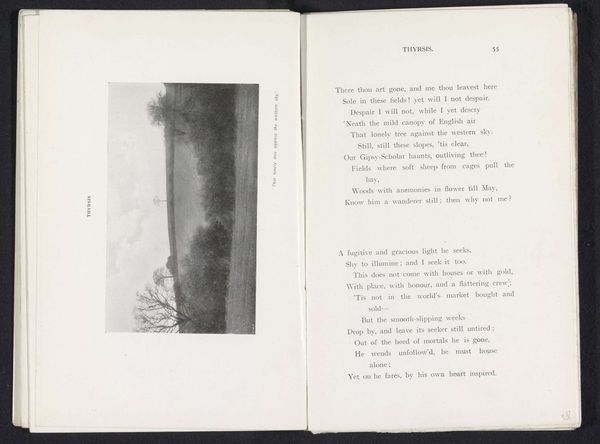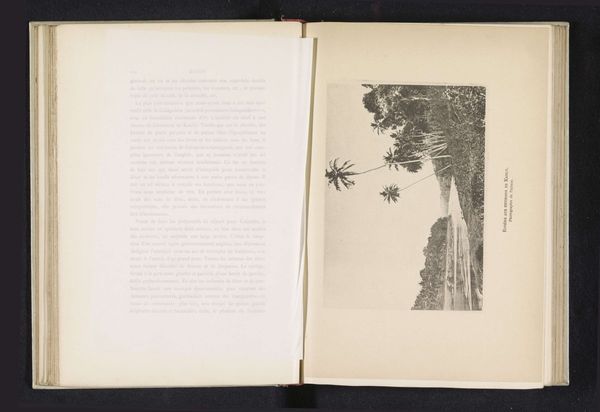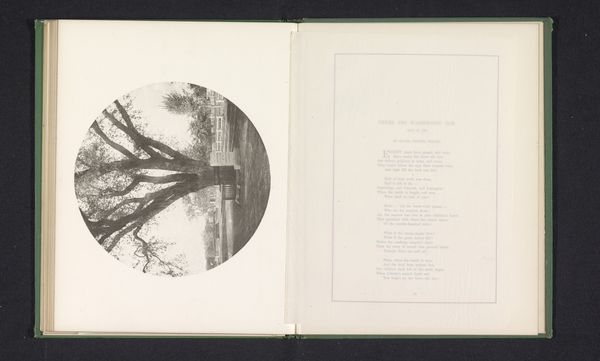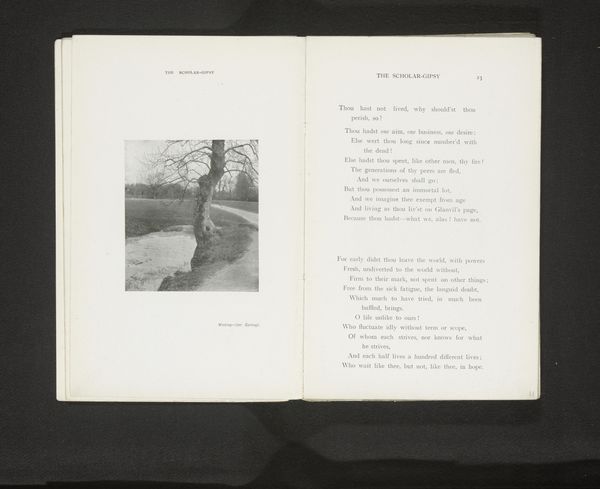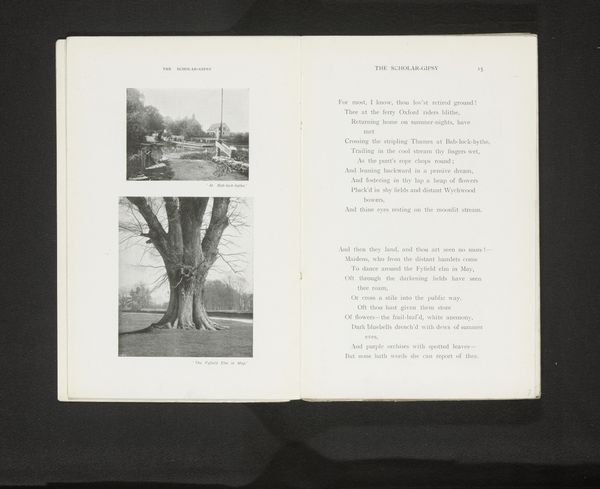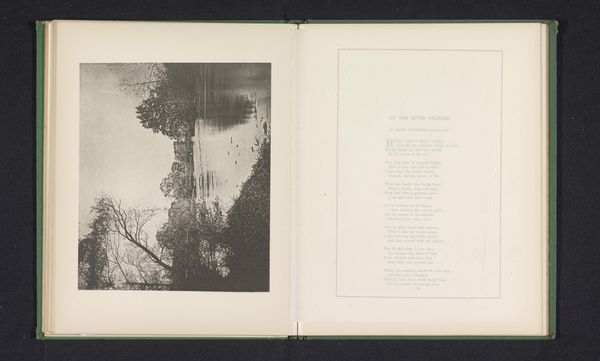
#
tree
#
script typeface
#
script typography
#
hand drawn type
#
hand-drawn typeface
#
stylized text
#
thick font
#
handwritten font
#
delicate typography
#
historical font
#
small font
Dimensions: height 96 mm, width 80 mm
Copyright: Rijks Museum: Open Domain
Curator: This striking image, "Boom in een weidelandschap," translating to "Tree in a Meadow Landscape," predates 1912 and is attributed to Henry W. Taunt. The black-and-white tones lend it a certain gravity, almost a sense of longing, don't you think? Editor: Longing, absolutely! There's a starkness, a solitary vibe. I'm instantly drawn to the tree; it's so upright and imposing, almost defiant in the middle of the wide, empty meadow. You just want to lean against it and tell it all your secrets. Curator: Perhaps that relates to the artist's intention, as the tree is part of the broader social and historical context around landscape and nature at that time. Consider its positioning as a solitary object amidst the landscape, one might argue the image captures a time when nature itself was perceived through lenses of dominance, and also Romanticism, yet threatened with change. It also serves as a visual metaphor in tandem with the facing page poem, titled "Thyrsis." Editor: Definitely. There's also this handwritten font on the bottom "Our tree yet crowns the hill" as well as on the facing page. It brings you closer to the work somehow. I think I feel it's very self aware somehow and yet still nostalgic and charming. Almost beckoning us into its landscape to rest from it all. It seems there's a duality to the overall imagery: grand, yet somehow accessible. Curator: The "delicate typography" certainly adds an element that complements the rustic realism, creating, as you put it, accessibility but at the time in this photographic book, Taunt could be echoing how nature should have remained more accessible to more. It invites deeper interpretation within social commentaries, touching on historical views of natural resources. The solitary tree could symbolize many themes tied to nature. Editor: I agree that its commentary has depth; what appeared to be a simplistic landscape initially, we now have this complex discourse about the use of our resources as humans. This chat actually helped to see the underlying currents that shape our appreciation and how we frame images of nature and landscapes. Curator: Precisely, examining this tree in the landscape enables us to critically explore a number of socio-historic facets of artistic vision and intention from years gone. Editor: Indeed. Food for thought, as always, so thank you.
Comments
No comments
Be the first to comment and join the conversation on the ultimate creative platform.
